Research Article Open Access
Botryococcus braunii as a Phycoremediation Tool for the Domestic Waste Water Recycling from Cooum River, Chennai, India
| Arone Soul Raj GP1, Elumalai S1*, Sangeetha T2 and Roop Singh D2 | |
| 1Department of Plant Biology and Plant Biotechnology, Presidency College (Autonomous), Chennai-600 005, India | |
| 2Department of Chemistry, Presidency College (Autonomous), Chennai-600 005, India | |
| Corresponding Author : | Elumalai S Associate Professor PG and Research Department of Plant Biology and Plant Biotechnology Presidency Colleg (Autonomous), Chennai-600 005, India Tel: 044-2854-4894 E-mail: ananandal@ gmail.com |
| Received March 25, 2015; Accepted April 28, 2015; Published April 30, 2015 | |
| Citation: Arone Soul Raj GP, Elumalai S, Sangeetha T, Roop Singh D (2015) Botryococcus braunii as a Phycoremediation Tool for the Domestic Waste Water Recycling from Cooum River, Chennai, India. J Bioremed Biodeg 6:294. doi:10.4172/2155-6199.1000294 | |
| Copyright: © 2015 Arone Soul Raj GP, et al. This is an open-a ccess article distributed under the terms of the Creative Commons Attribution License, which permits unrestricted use, distribution, and reproduction in any medium, provided the original author and source are credited. | |
Related article at Pubmed Pubmed  Scholar Google Scholar Google |
|
Visit for more related articles at Journal of Bioremediation & Biodegradation
Abstract
The micro algae are the green photosynthetic micro organisms, which are the primary producers of the aquatic ecosystems. The green micro algae have evolved long back approximately two and a half billion years ago and initiated the process of photosynthesis in the world. The Botryococcus braunii is a green photosynthetic micro alga fixes atmospheric CO2 for energy production and it is well known for high quantity of lipid accumulation. Along with normal fatty acids the long chain different types of hydrocarbon production exudates outside of the cells are the characteristic features of this specific micro alga. At the same time, this unique micro alga has been reported to grow well in the sewage waste water and can be used to remove toxic metals and unwanted nutrients from waste water. In this present study, a new and novel strain of Botryococcus braunii has been isolated from the temple ponds around the Chennai city, Tamil Nadu, India. The effective treatment of domestic waste water from different sites around Chennai city using Botryococcus braunii has been well evaluated in this current study. The physiochemical parameters like COD, BOD, electrical conductivity (EC) and ammonia have been removed more than 70% from domestic waste water especially in Adyar River (AR) domestic waste water when compared to other waste water. The growth kinetics of the Botryococcus braunii strain in the domestic waste water AR and NB (Napier’s bridge) have shown good results when compared to other samples. The micro alga B. braunii strain is well known for its high lipid production and which was achieved from the biomass harvested from the domestic waste water sample AR. The total carotenoid content was also found in the micro algal biomass from the sample AR. This overall research study suggested that the implication of some important micro algae for the treatment of waste water can remediate the water resource as well as the biomass yield can be economically useful for many applications.
| Keywords |
| Botryococcus braunii; Waste water treatment; Biochemical constituents |
| Introduction |
| The green micro algae are group of photosynthetic unicellular or filamentous micro organisms which can fix atmospheric carbon dioxide (CO2) as their carbon source with high efficiency about 10 to 50 folds larger than terrestrial plants [1]. Therefore, the major edaphic factors which are responsible for the growth of the micro algae are light, nutrients, temperature and pH [2]. The micro algae can grow well at a very fast rate than land plants and they have the ability to double their biomass within a day [3]. The micro algae are cosmopolitan found in different ecosystems even in extremophiles [4] and they are the mini factories used to live by the process of photosynthesis [5]. The micro algae fixes atmospheric CO2, at the same time it can also utilize flue gas rich in CO2 and CO3 even with sulfur and heavy metal content [6]. |
| Most of the micro algae can grow well in the domestic waste water rich in carbon, nitrogen and phosphorous conditions. The removal of nitrogen, phosphorous and toxic metals from domestic waste water by micro algae and their effective role in the processing of domestic waste water have been studied well [7]. There are so many advantages in the treatment of domestic waste water using the micro algae; environmentalfriendly, no secondary pollution, biomass can be reused and efficiently recycling the nutrients etc. Industrial waste water can also be used to treat with the micro algae before dumped in to the natural fresh water resources otherwise, the inorganic substances such as ammonium, nitrate and phosphates contributes eutrophication in the water bodies receiving the waste effluents from the industries [8]. The conventional treatment of municipal waste water by primary settling and secondary biological processing (e.g. activated sludge or tickling filter) removes only a fraction of nitrogen and phosphorous from the waste water. But a successive treatment biologically by nitrification and denitrification steps can be effective to remove residual nitrogen [9]. |
| The Micro alga Botryococcus sp. can grow effectively well in the domestic sewage which has been pretreated by activated sludge treatment can be used as a source for hydrocarbon production. The secondary treated sewage was characterized and found to accumulate large amount of nitrogen and phosphorous. While mass cultivation of B. braunii on secondary treated sewage aerated with 1% CO2 at 25°C without any changes in the pH, the nitrate content was reduced from 7.67 gm-3 to a level below detection (<0.01 gm-3). And the micro alga utilized phosphate at quite low levels (0.02 gm-3) ammonium was not utilized. The yield biomass was 0.35 kg m-3 in a week and the hydrocarbon content was 53% of dry weight when compared to the medium Chu-13 used in other study with same conditions (58% from dry weight) [10]. |
| The green micro alga, Botryococcus braunii is known for their high hydrocarbon accumulation in their biomass. The hydrocarbons are very good source of Biofuel, which can be biologically produced from the micro alga B. braunii. There are about 13 species of Botryococcus have been reported with minor morphological, physiological and biochemical properties [11-14]. Various strains of B. braunii have been studied distinctly their growth and accumulation of unusually enormous amounts of hydrocarbons [15,16]. The micro alga Botryococcus braunii has attracted many researchers due to high lipid and different hydrocarbon production. The B. braunii is a colonial green micro alga distributed on all the continents in fresh water, brackish water, Saline lakes, reservoirs and small ponds [17]. These characteristic features of B. braunii opting it an important candidate for photosynthetic production of hydrocarbons [18], and thus provides a potential source for renewable and sustainable biofuels [19]. |
| The Botryococcus braunii appear as clusters of cells in different sizes, sometimes even up to 1 mm and the cells are attached to one another by transparent and refrainment threads [20]. The pyriform shaped cells usually at a size of 13 μm × 7 μm and engulfed in pale yellow to red colored oil. These strains are cosmopolitan in nature found in many countries including the USA, Portugal, France, India, Japan, Philippines, Malaysia and Thailand. The Botryococcus braunii was first described by Kutzing [21] about 130 years ago, which is a unicellular and aggregates up to 0.5 mm in diameter. The cells are engulfed in a gelatinous mass of oil with carotenoids [22]. The exponential growth of these strains can produce photosynthetic pigments like chlorophyll a and chlorophyll b and around 20% of hydrocarbons among their biomass [23-27]. During the resting state the cells the lipid composition was drastically altered, the unsaponifiable lipids increases up to 80% of dry weight [23-37]. The B. braunii can converts 3% of solar energy in to hydrocarbons which can be 70% of their dry biomass and when it was cracked it can yield about 67% gasoline, 15% aviation fuel, 15% diesel and 3% residual oil [28,29]. |
| Botryococcus braunii is being a photosynthetic micro alga, it has been reported to reduce CO2 emissions by 1.5 × 105 tons per year and 8.4 × 103 ha [30], thus reduces global-warming in its credit. With a capacity of lipid production up to 80% from dry weight, B. braunii is the potential source of biodiesel [31]; nitrogen deprivation [32,33], silicon deficiency [34], phosphate limitation [35], high salinity [29,33] are the factors used to induce lipid production. A common feature of B. braunii is the presence of highly aliphatic, non-hydrolysable and insoluble Algaenan found in their outer cell wall. These characteristic features selectively preserve them during fossilization, leading to fossil remains and which can be a major contributor for high oil sediments [36]. The variations in the accumulation of hydrocarbons may be due to the differences in the strains and also depends on the physiological conditions [37]. The biodiesel from the hydrocarbons of B. braunii are free from oxides of sulfur and nitrogen during combustion. |
| The micro alga B. braunii undergoes colour change during cultivation due to production of secondary carotenoid pigments in the matrix [38]. Some of the carotenoid pigments reported from B. braunii are β-carotene, echinone, 3-OH echinone, canthaxanthin, lutein, violaxanthin, loroxanthin, neoxanthin adonixanthin [39], botryoxanthin-A [13], botryoxanthin-B and α-botryoxanthin [40], braunixanthin 1 and 2 [40]. The carotenoid pigment accumulation can be directly related to the lipid production due to the stress conditions the strain experiencing [17]. The carotenoid pigment lutein and β-carotene produced by B. braunii in India [41]. |
| The current research study deals with the isolation of new Botryococcus braunii strain from the temple ponds, implementing such strain for domestic waste water treatment around Chennai, Tamil Nadu, India (Figure 1a) and the biochemical analysis of the harvested biomass. |
| Materials and Methods |
| Collection of fresh water samples and isolation of Botryococcus braunii |
| The fresh water samples with greenish, pale green and pale reddish micro algae blooms were collected in 200 ml vials from six different temple ponds around the city Chennai, Tamil Nadu, India. The temple pond sites are 1) Mylapore, 2) Triplicane, 3) Thiruvanmiyur and 4) Saidapet (Figures 1b and 2). All the fresh water samples were brought to the laboratory and optically analyzed the presence of Botryococcus braunii in a compound binocular microscope (OLYMPUS CH20i) and photographed. |
| The micro algal bloom from different fresh water samples were subjected to serial dilution using BBM medium. And each fraction were used to streak on the BBM medium with 4% agar and incubated under light illumination at approximately 25°C. The different micro algae growth was sub-cultured in BBM medium (broth). The Botryococcus braunii strain was isolated and the pure culture was maintained in BBM medium in the culture room. |
| Domestic waste water treatment using B. braunii |
| The domestic waste water samples were collected from four different sites around the Chennai city. The sites are the small rivers which used to dump the domestic waste water in to the ocean which are, 1) Aminjikarai (AK), 2) Ethiraj College (EC), 3) Adyar River (AR) and 4) Napier’s bridge (NB) (Figures 1c and 3). About 4 L of domestic waste water samples were collected from each of the site and brought to the laboratory. Among the collected domestic waste water samples (4 L each), 2 L from each of the sample were allowed to autoclaved at 15 lbs for 15 min. in four 5 L conical flask each. All the autoclaved and cooled domestic waste water was inoculated with the newly isolated strain of B. braunii with a control (2 L of BBM medium in a 5 L conical flask). All the five conical flasks were incubated under light illumination (12:12 hour’s light and dark conditions) at room temperature (27°C). |
| Physiochemical analysis on untreated and treated domestic waste water |
| The remaining 2 L of collected raw domestic waste water and micro alga treated domestic waste water were subjected to analyze the physiochemical parameters. The raw domestic waste water was given at the time of collection, while the treated domestic waste water was given after the successive treatment (Figure 4). The all the physiochemical parameters both the untreated and treated domestic waste water was analyzed by TWAD (Tamil Nadu Water and Drainage Department laboratory, ISO: 9001), Chennai, Tamil Nadu, India. The physiochemical parameters such as Total alkalinity, Total dissolved solids (TDS), Turbidity, Electrical conductivity, Total hardness, Calcium (Ca), Magnesium (Mg), Sodium (Na), Potassium (K), Iron (Fe), Manganese (Mn), Free ammonia (NH3), Nitrate (NO2), Chloride (Cl), Fluoride (F), Sulphate (SO4), Phosphate (PO4) Biological oxygen demand (BOD) and Chemical oxygen demand (COD) were considered (Table 1). |
| Analysis of biochemical constituents from the harvested biomass of B. braunii |
| The growth kinetics of the micro alga was estimated optically using the absorbance at 680 nm in a Spectrophotometer (Hitachi U-2900) and the readings were recorded for 23 days of cultivation in the domestic waste-water. |
| About 5 ml of the micro alga cultures from all the five samples including a control were centrifuged at 5000 rpm for 10 min. and the cell pellet was subjected to extraction using acetone and kept overnight. Then the samples were centrifuged at 8000 rpm for 5 min. and the supernatant contains colored pigments which can be used to estimate the different pigments at different wavelengths. The pigments including chlorophyll a, chlorophyll b and total carotenoid were estimated optically from the absorbance at 665 and 652 nm for both the chlorophyll pigments and 450 nm for total carotenoid were calculated by the method prescribed by Lichtenthaler [42]. |
| The major biochemical constituents including Carbohydrate, Protein and Lipid were estimated from the five treated samples including a control by the following prescribed methods such as Dubois et al. [43] method or Phenol-Sulphuric acid method [43], Bradford’s protein assay [44] and Folchs et al. method [45] respectively. |
| Results |
| Isolation of Botryococcus braunii |
| The major task of the current study is to isolate a potent strain of Botryococcus braunii from the temple tanks of Chennai city. Thus, all the four temple tank water samples were detected for the presence of B. braunii in which, the temple tanks from the sites Saidapet and Triplicane have shown the occurrence of B. braunii (Figure 5). The two water samples were further used to isolate the B. braunii strain and the isolated pure micro alga culture was maintained in the culture room under laboratory conditions. |
| Physiochemical analysis of untreated and treated domestic waste water |
| Among all the physiochemical parameters, the TDS (Total Dissolved solids), Turbidity, EC (Electrical Conductivity), COD, BOD, Sulphate, Chloride, Sodium, Calcium, Magnesium and Total Alkalinity were found to reduce quantitatively when compared to untreated and treated domestic waste water. About 67% of total dissolved solids were reduced in the sample AR, which is the highest when compared with other samples and the minimum removal was recorded in the sample NB (27%) (Figure 6). The reduction percentage of electrical conductivity has been found high in the samples AR (77%) and AK (58%) but which is very least in samples EC (12.5) and NB (4.3%). |
| Especially, the ammonia content was reduced well in all the treated samples, in which high percentage of reduction was seen in the samples, NB with 92.3% followed by AR, EC and AK which are 83%, 75.4% and 72.8% respectively. The BOD was reduced up to 76.5% in the sample NB, 66.7% in AR, 57.8% in AK and 45% in EC (Fig. 9). The COD levels were also found reduced similar with the BOD levels, 79.6% in NB, 71.3 in AR, 53.2% in AK and 46.6% in EC (Fig. 8). The sulfur content from the domestic waste water was found reduced in the treated samples which have shown about 70.3% reduction in the sample AR, 63.6% reduction in the sample AK followed by NB and EC with 40.5% and 40.4% respectively. The potassium content was also reduced at high percentage in the sample AR (88.2%) when compared to other treated samples AK (73.9%), NB (58.2%) and EC (43.4%) (Table 1) |
| Biochemical constituents of the harvested biomass from B. braunii |
| According to the results obtained from the growth kinetics of the four treated domestic waste water samples, the samples AR and NB found to attain high growth when compared to the samples AR and NB. Consistent growth of the micro alga Botryococcus braunii occurs from 10th to 20th days in all the treated domestic waste water samples (Figure 7). After 23 days of incubation the biomasses from the four treated samples were harvested and the wet biomasses were estimated that, AK: 10.741 g, EC: 17.79 g, NP: 9.251 g and AR: 9.242 g. The biomasses yield high in the samples EC and followed by AK when compared with other samples. The same type of results obtained from the dried biomasses also (Table 2). |
| Pigments |
| The total carotenoid content was found high in the sample AR with 442 mg L-1 in comparison with other samples. The sample EC engulfs about 257.8 mg L-1 of carotenoid pigment. Similar type of results occurs in the case of both the chlorophyll pigments. The samples AR and EC acquired relatively high amount of chlorophyll a and chlorophyll b than the samples AK and NB which acquired very least amount of chlorophyll pigments (Table 2). |
| Protein |
| The protein content of all the four domestic waste water treated micro alga biomass samples were quantitatively estimated and the results shown that the sample AR recorded much protein content of 14 mg/ml when compared to other samples with 0.06 mg/ml at NB, 0.22 mg/ml at EC, and 0.31 mg/ml at AK (Table 2). |
| Carbohydrate |
| The sample AR was found to engulf more amount of carbohydrate (4.31 mg/ml) when compared to other samples AK (3.72 mg/ml), EC (2.64 mg/ml) and NB (0.72 mg/ml). These results found similar with the protein content where the sample AR has shown high protein content (Table 2). |
| Lipid |
| The lipid content was also found similarly high in the sample AR as in protein and carbohydrate; the lipid content was 6.52 mg/ml in AR followed by AK with 0.4 mg/ml, EC with 0.28 mg/ml and NB with 0.13 mg/ml (Table 2). |
| Discussion |
| The present research study deals with the isolation of Botryococcus braunii strain from the temple ponds. The water from the ponds was once used for domestic purposes in households. The temple ponds are very old ancient ponds existing more 100 years, which are the successful habitats for specific micro algae and are remediating the water in the ponds. It may found as blooms in large-scale ponds and lakes occurring naturally with high production of aliphatic lilpids [46]. In stressful environment, the B. braunii strains optically viewed as yellowish green to yellowish orange in colour present in all the geographical regions, the same have been reported from Miocene lignites of Kerala, India [47]. The Botryococcus is one of the far-living micro algae on earth by observing many different fossil records from different geographical regions [48]. The Botryococcane is the product of the ‘B’ race of Botryococcus strains which are found along the coastal line of Australia [49]. The presence of Botryococcus braunii strain was found in two temple ponds which are Saidapet and Triplicane. These ponds are relatively very old ponds found in the Chennai city. The Isolated pure culture of B. braunii was maintained in the algal culture room. The micro algal communities from four sites were recorded which constitutes the class Chlorophyceae, Trebouxiophyceae, Bacillariophyceae and Cyanophyceae (Figures 8 and 9). |
| India is a very old traditional country with high biodiversity, coastal cover and fresh water habitats, but still the report on the occurrence of Botryococcus strains is limited. About four different isolates have been collected and studied from a lake near Chennai [50]. From the four different isolates, one was studied to have specific characters like colony formation, minimum mucilage and cup like remnants with parent wall which was assigned as B. braunii and the rest were B. neglects [37]. About 23 different micro algae have been reported in this study, in which B. braunii strain has been found to occur in two temple ponds Triplicane and Saidapet. New Botryococcus strains were isolated and reported to occur in fresh water ponds near the ancient old city Mahabalipuram in Tamil Nadu near Chennai city [51]. About new four strains of B. braunii were reported from the fresh water bodies of Kodaikanal, Tamil Nadu [29]. From this present study, a new and novel B. braunii strain was isolated from the temple ponds around the Chennai city. |
| The Botryococcus being a photosynthetic micro alga can fix about 1.5 × 105 tons per year [30] and it can sustain its growth while treating with secondary treated sewage water by intake of some unwanted polluting metals like chrome, cadmium and arsenic [52]. The micro alga treatment of secondary treated sewage water using Botryococcus have reduces the nitrogen and phosphorous alternatively elevates the growth and hydrocarbon production and has shown similar results while grown in Chu-13 medium [10]. The elevation in the production of hydrocarbon was directly proportional to the reduction of nitrogen and phosphorous seen in the secondary treated sewage water [53] and yielded about 49% of hydrocarbon from the dry biomass. Huge hydrocarbon production (44.5% from dry biomass) has been yielded from the Botryococcus when treated with waste water enriched with CO2 [54]. |
| The conventional treatment of municipal waste water (primary settling and secondary biological processing) removes a fraction of nitrogen and phosphorous from the waste water. But, waste water treatment by nitrification and denitrification using microbes can be effective when compared to conventional treatment [9]. Potassium nitrate and ferric citrate induces the hydrocarbon accumulation in B. braunii strain while growing in a medium [35]. In this current study, all the physiochemical parameters were found to be reduced from the domestic waste water. Total dissolved solids were reduced up to 67% and Electrical conductivity reduced up to 77% in sample AR while biologically treated with Botryococcus braunii. The ammonia content was reduced from all the treated samples and relatively high in the sample NB with 92.3% of removal. The COD and BOD percentages were also reduced high in sample NB with 79.6% and 76.5% respectively. |
| During their exponential growth the micro alga B. braunii can synthesize the photosynthetic pigments chlorophyll and carotenoid production during stressful conditions and hydrocarbons around 20% from dry biomass [23-27]. About thirteen different species of Botryococcus have been reported based on their morphological, physiological and biochemical characters [11-14]. The Botryococcus strains can produce different carotenoid pigments like β-carotene, canthaxanthin, violaxanthin etc. Lutein content is the major carotenoid accumulated in all the different strains of Botryococcus (29%), echinone (28%) during stationary phase [38]. The hydrocarbon and carotenoid were elevated in its production in Chu-13 medium by increasing the nitrate concentration in the medium [55]. The total carotenoid content found high from the biomass of AR treated sample with 442 mg L-1 from this present study. The B. braunii was already studied exclusively as they grow autophototrophically and produce high amounts of different hydrocarbon molecules [15,16]. |
| The micro alga Botryococcus have been known for its accumulation of hydrocarbons, exopolysaccharides and carotenoid in their matrix [38,56]. About fifty different hydrocarbons have been identified from the wild B. braunii strains [57]. These compounds found as a range between monoenes and tetraenes with odd-carbon numbered and exhibited a terminal saturation. The hydrocarbon content may vary due to genetic factors and the variations were observed in different strains under same culture conditions [58]. |
| Protein content is the most important among biochemical constituents and their levels may differ in various algae. There are various groups of proteinaceous materials found in marine aquatic systems which drawn recent attention [59-61]. Some algal species may have huge amount of protein up to 47% from its dry biomass. In this current study, the sample from AR treated micro alga biomass had yield about 14 mg/ml when compared to other samples. Sugars are the products of photosynthesis and are converted to polysaccharides for further metabolic pathways [62]. B. braunii (race A and B) strains are also known to produce exopolysaccharides up to 250 g m-3, whereas L race produce up to 1 kg m-3 [28]. About 4.31 mg/ml of carbohydrate was obtained from the sample AR in this present study when compared to other samples. Lipid is the most important among biochemical composition because the micro algae have the positive role in biodiesel production [63]. The production of different types of hydrocarbons is the special features of the Botryococcus strains. The hydrocarbons are a long tail hydrophobic attached to hydrophilic carboxylic group and are other types of lipids [64]. Lipids present in the micro algae are classified into neutral lipids (Triglycerides and cholesterols) and polar lipids (Phospholipids and galactolipids) [65]. The triglycerides are the deserved products for the production of biodiesel [66]. The lipid estimated from this present study has shown that the lipid content was high in AR with 6.52 mg/ml when compared to other samples [30,67,68]. |
| From this overall research study, it has been revealed that the micro alga was present in the fresh water of temple ponds. And during lab scale treatment with domestic waste water, it has shown enough to remove the ammonia, potassium, TDS and EC from the waste water and in future it can be implemented [52,69]. The biochemical constituents are also highly accumulated especially lipid content which can be utilized for effective biofuel production in the upcoming future. |
| Conclusion |
| The temple ponds sites Saidapet and Triplicane are the very old temple ponds of the Chennai city from which the new B. braunii strain was isolated. The Botryococcus braunii strain was effective in treating domestic waste water; almost all the physiochemical parameters have been reduced. The ammonia content is the major pollutant of waste water and is the one dumped in large amount, which has been removed about 90% by the treatment of the micro alga B. braunii strain. The biomass was rich in lipid content and thus may be useful for biodiesel production while implementing in large scale. The carotenoid content was also high and can be used as fish feed to improve nutrition. Therefore, the present study concluded that the economically important biological organisms can also used as a remediating tool to reduce the environmental pollution impacts and alternatively they are good sources of important commercial products. |
| Acknowledgements |
| The authors express their sincere thanks to the Principal and the Head of the Department, Department of Plant Biology and Plant Biotechnology, Presidency College (Autonomous), Chennai-600 005. |
References
|
Tables and Figures at a glance
| Table 1 | Table 2 |
Figures at a glance
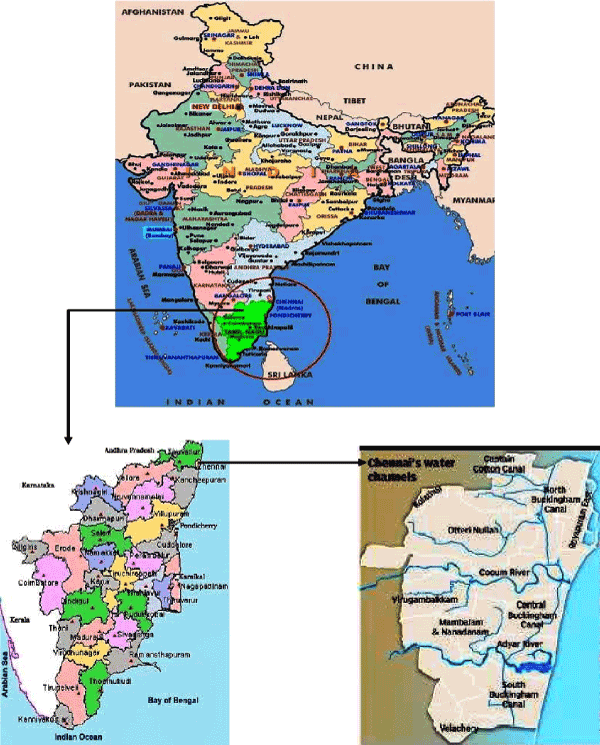 |
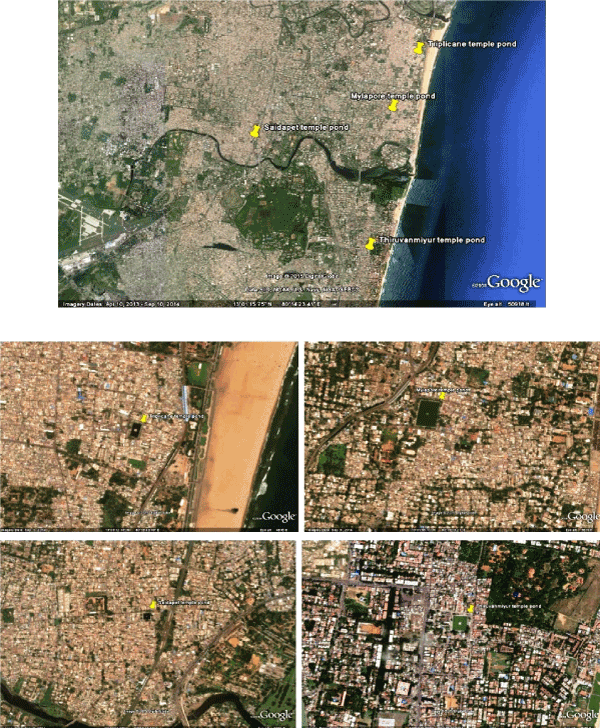 |
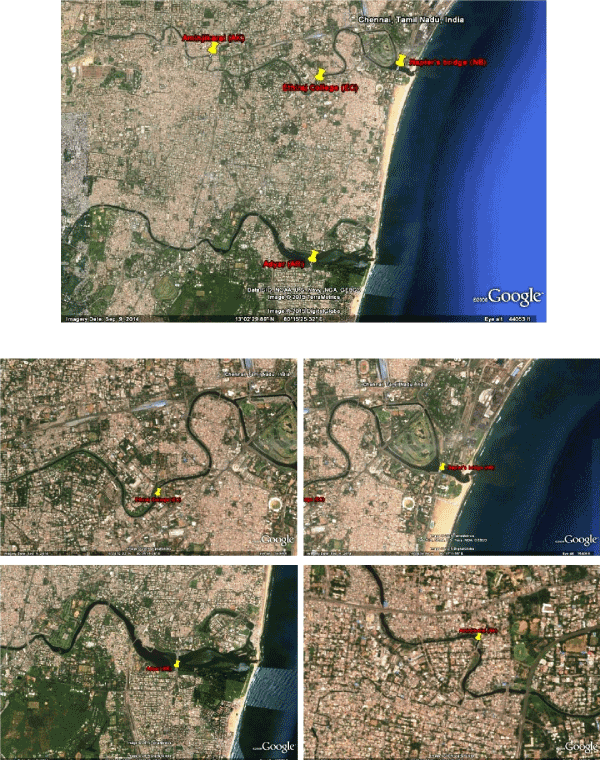 |
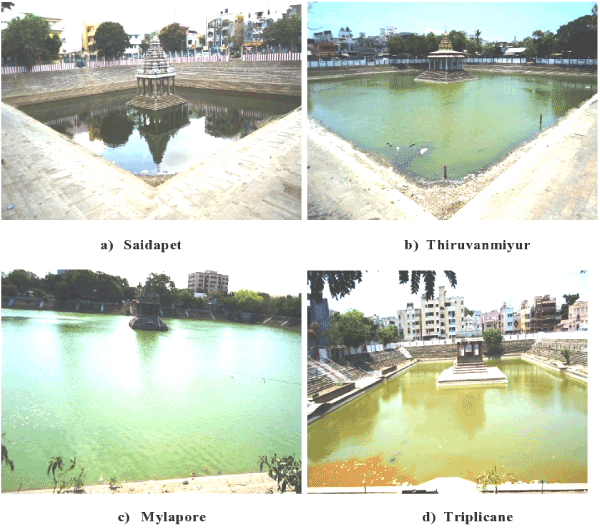 |
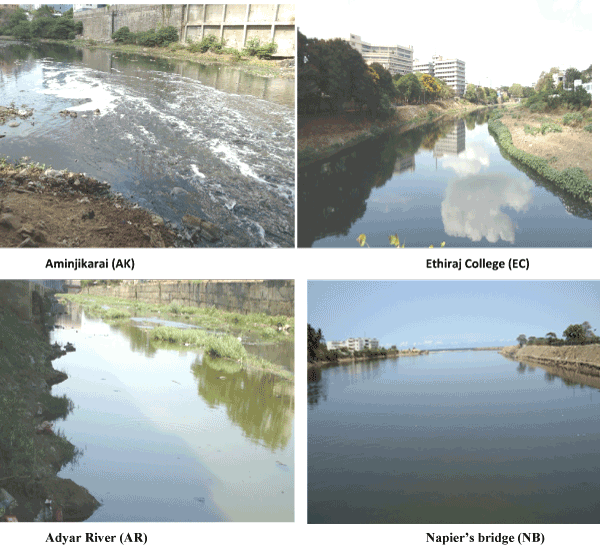 |
| Figure 1a | Figure 1b | Figure 1c | Figure 2 | Figure 3 |
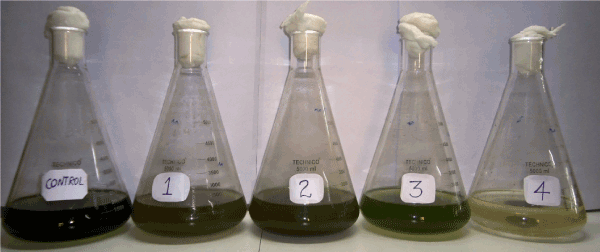 |
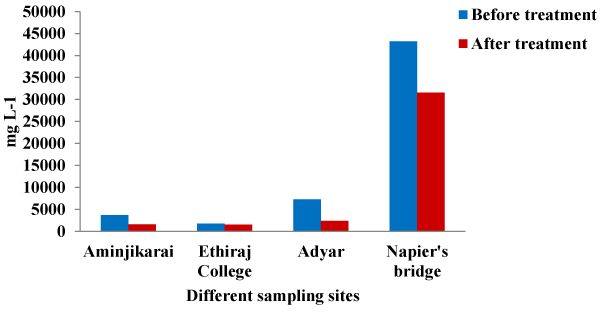 |
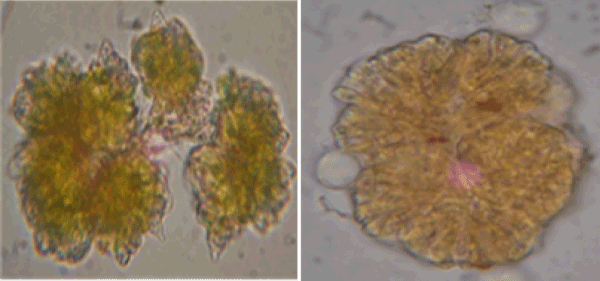 |
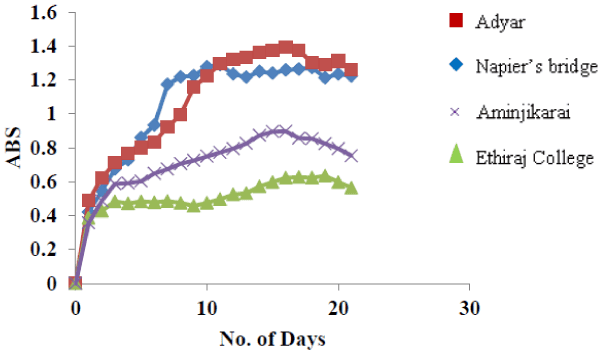 |
|
| Figure 4 | Figure 5 | Figure 6 | Figure 7 | |
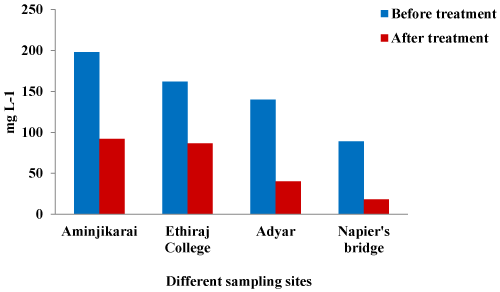 |
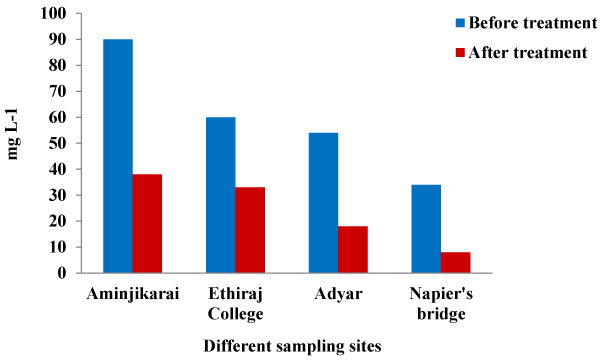 |
|||
| Figure 8 | Figure 9 |
Relevant Topics
- Anaerobic Biodegradation
- Biodegradable Balloons
- Biodegradable Confetti
- Biodegradable Diapers
- Biodegradable Plastics
- Biodegradable Sunscreen
- Biodegradation
- Bioremediation Bacteria
- Bioremediation Oil Spills
- Bioremediation Plants
- Bioremediation Products
- Ex Situ Bioremediation
- Heavy Metal Bioremediation
- In Situ Bioremediation
- Mycoremediation
- Non Biodegradable
- Phytoremediation
- Sewage Water Treatment
- Soil Bioremediation
- Types of Upwelling
- Waste Degredation
- Xenobiotics
Recommended Journals
Article Tools
Article Usage
- Total views: 16798
- [From(publication date):
May-2015 - Jul 03, 2025] - Breakdown by view type
- HTML page views : 11987
- PDF downloads : 4811
